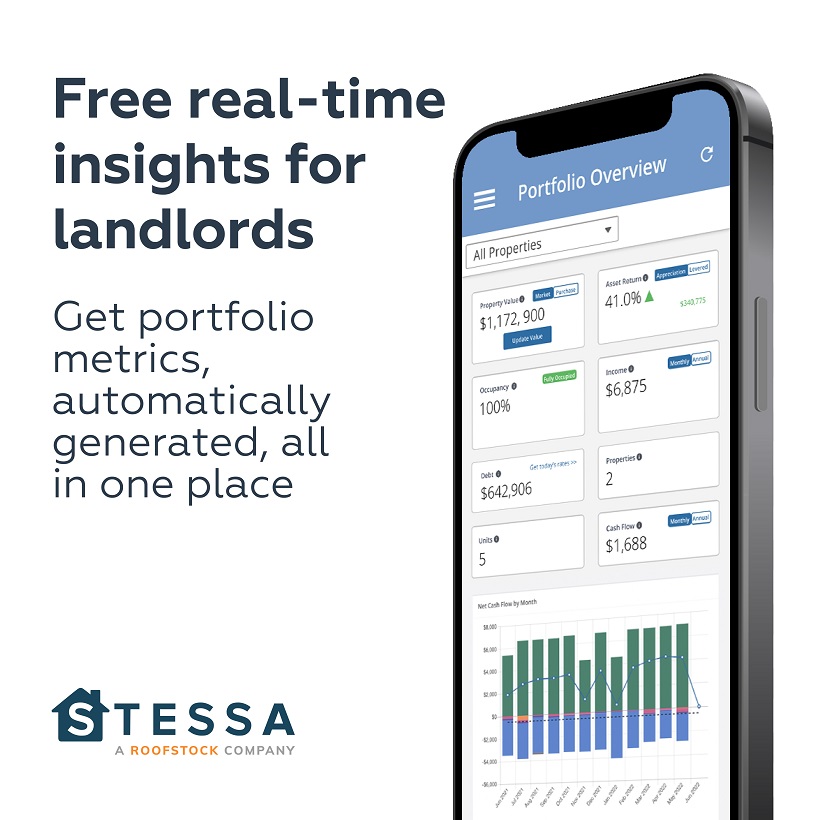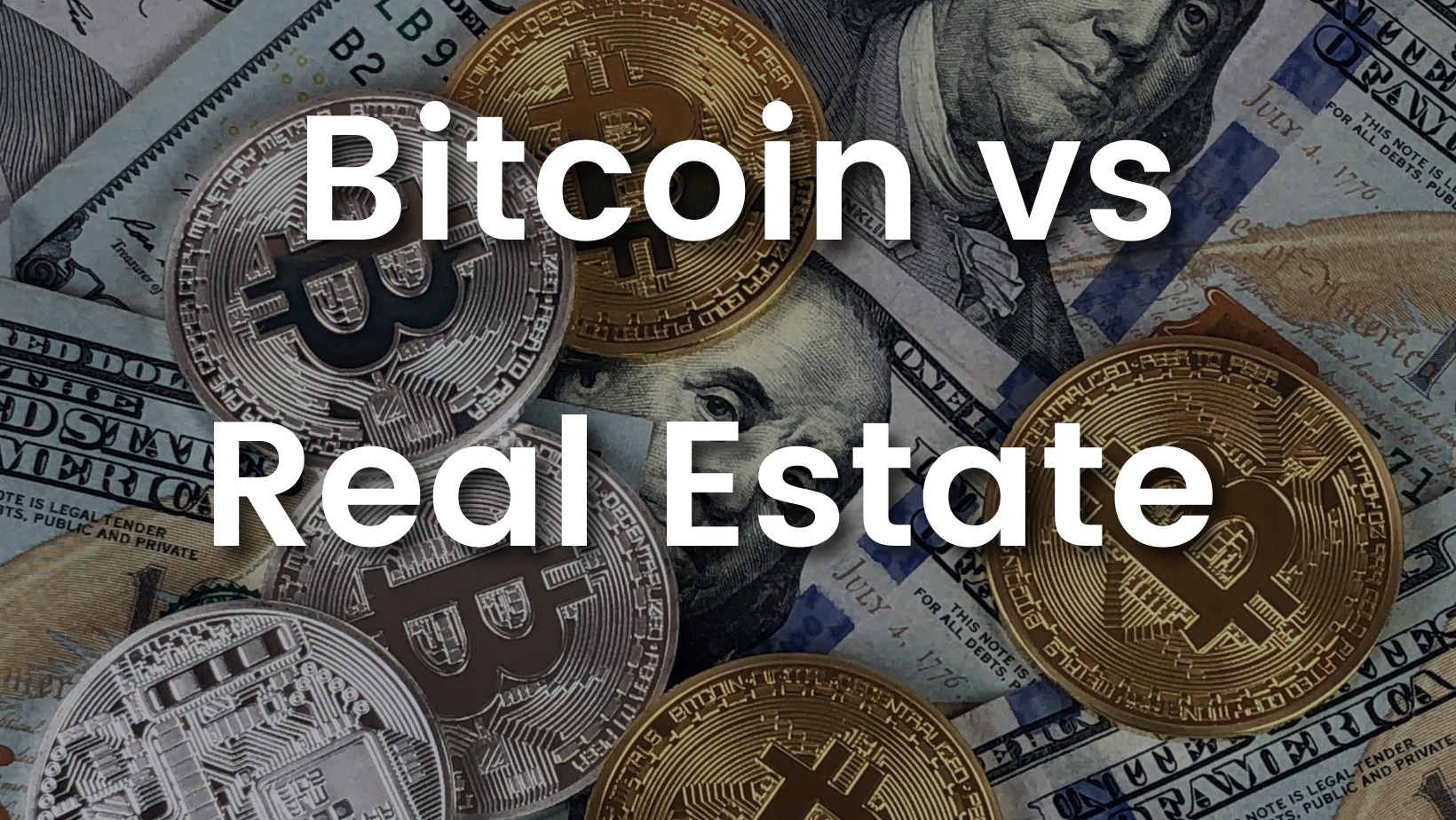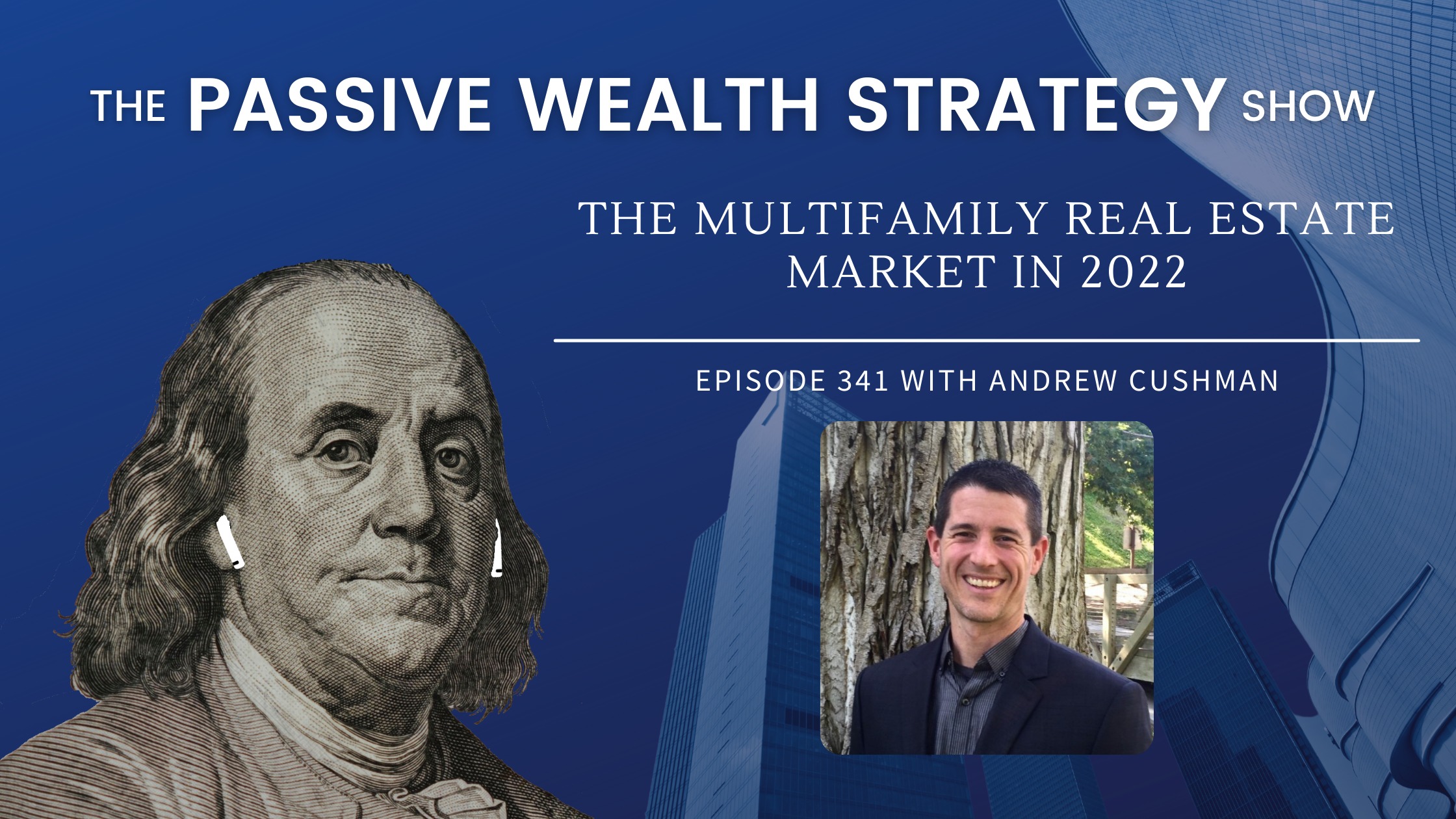
The Multifamily Real Estate Market in 2022 with Andrew Cushman
Andrew. Thank you for joining us. Thank you for coming back to the show today.
Hey, good to be here again.
It’s been great talking with you. And since the last time, you came on this. You’ve accomplished so much. You’ve done so much tht the time. And then the balls just kept rolling. So for our listeners out there, can you catch us up to speed as to how things have gone for you for the last, you know, year and a half, two years.
And so, and you know, I’ve talked to, it’s been a really, really good year. We’ve syndicated done two large syndications or at least large for us. We did 252 units in the Florida and Fort Walton beach, Florida. That was a $49.8 million deal. And then actually this just let’s see three, four days, three, four days ago, we had a double closing where we sold a property in the Atlanta area that we.
Bought it five and a half years ago for like 6 million and sold it for 20.7. And then we at on the same day, we closed on the acquisition of 220 units. And Savannah, we’re really excited about that deal and operations are doing phenomenally well. So it’s a feeling grateful and blessed to have. It actually ended up being a really good year here so far.
So that’s awesome. And I don’t want to gloss over that because. I think, do I need to record that, that I miss here? A number you bought a property for 6 million. And sold it for 20 and change millions.
Yeah. Yeah. It was actually two properties that were just, just, you know, like a mile and a half apart. We bought them five and a half years ago for 6 million.
We put 1 million into renovation, so not, not a heavy lift, just light upgrades, and then closed the last Friday for 20.7 on the exit. So a not a, not a bad deal. So, yeah.
That’s awesome. And I wonder, you know, looking back, I think it’s always smart as ambassadors to look back on. Bad deals of course, but are our good deals as well and understand where our successes came from.
And I mean, that’s a that’s aanenormous amount of of appreciation. It’s no secret that cap rate compression has happened and all that kind of stuff. But you did reposition the property. If you break it down, how would you attribute the success there between, you know, changes in the market versus, I don’t know whether you raise rents or cut expenses or, you know, walk us through this?
I mean, you certainly mentioned one of the biggest factors that we absolutely cannot take credit for. And that is the fact that you know, cap rates continue to compress and in the market for, you know, more and more capital became interested in multi-family. So that is something that we had, you know, had no control over, but we did have control over that really, really helped it.
Asset selection and market selection. So when we bought those properties it was using the same criteria that we still use today in that they’re in a submarket of Atlanta, where there was very strong population growth and strong median incomes, and they is the primary driver of. No rental housing demand is population growth.
And if you have strong, good demand that typically leads to. Rent growth. And so by purposely, you know, buying a B class working class, you know, an asset in a market that had strong population growth that had, you know, good, solid median incomes. And for, you know what I am that number in, you know, this, again, this is a suburb of Atlanta.
So I think the median income there was in the low 50 thousand. Right. So why is that important? Well, because. Our rent that we are going to be charging. And when we bought those were affordable to the vast majority of people in that area. Right? So the median income, I’ll give you an example. Let’s say your rent is a thousand dollars a month.
That’s $12,000 a year. Rent is considered affordable if it’s 25% or less of someone’s income, right? So if your rent is $12,000 a year, that means someone needs to make $48,000 a year. For that rent to be affordable. And so, you know, when we bought it, the rents were like $700 and it’s an area where there’s 50,000, $50,000 median income.
So that means that the vast majority of people in that area can easily afford to come rent at our, at our properties. So when you combine good solid incomes with strong population growth, that gives you a huge tailwind. Dramatically increases the odds that you’re going to have that type of exit. Right.
If you go, if you go all the way back to the, you know, the grandfather of realist of multifamily, syndication, andboot campss, Dave Lindahl, right. He, you know, he started, he started teaching this stuff back in the nineties. You know, one of his books is is talks about emerging markets. I think it’s the multifamily millions book.
And that’s what we did is we, we, you know, Five six years ago. And even now we’re looking for markets where there were, you know, we could get ahead of incoming jobs and incoming population growth. And then that’s exactly what happened is as Atlantic expanded, people just kept moving to the suburb of Atlanta.
And just in, in the incomes, went up, budget demand, went up, pricing of properties, went up and it was a successful exit. And that’s the same thing we still do today is we screen very carefully. For it to find markets like that. So, you know, again, if you have a strong tailwind behind you, then that just dramatically increases the odds of your success.
Nice. Now the big question, I think that anyone gets asked when you have a successful exit and I’ve been through this, I bet you got this question is why to sell rather than refinance and just go buy something else, especially if you have. So much equity in those properties. I mean, shoot, you can get pretty attractive, you know that right now, and you could have just gone and buy more properties you held for five years.
Is that the reason why, like what drove that decision?
There’s a handful of things. One is. Yeah, those were syndicated deals, which of course means we had, you know, a whole bunch of investors in there for a hundred thousand or 200,000 apiece. And so when we bought those, we told our investors, Hey, this is about a five-year hold.
And we had reached that timeline. So, you know, generally speaking, you do kind of have to give, give people some, most people don’t want their money back. Right. But also most people want to, okay, I’m going to get it back at this point in time. And then, you know, generally try to honor that. So number one giving people an exit to as much as I very much am still a firm believer in the multifamily market and that they’re, you know, the fundamentals are very strong in there, especially with inflation.
There, there is more upside to it. There’s also something to be said to occasionally take some chips off the. And just staying, you know what let’s, you know, you know, this, this has been a huge win let’s go ahead and cash out and then give everyone the opportunity to, you know, to move on and move on from there.
The other one that you don’t hear as often is the return on equity, right? Everybody talks about return on investment. Well, I put in a hundred thousand and I’m getting 10,000 a year, so I’m getting. You know, a 10% cash on cash return. Right? Well, that’s your return on investment, but if that hundred thousand that you invested is now worth 300,000.
Okay. And you’re getting 10,000 a year. Now your actual return on equity is 3.3%. Right. So is that a great return? Yeah, I don’t know. Right. So then it comes into, so, okay. So if you sell and you take that a hundred thousand, that’s now worth 300,000 and you go put that 300,000 into another deal that makes, let’s say 8%.
You actually just doubled your return. Right? So that’s another reason to sell is when your return on equity gets too low. Sometimes the only way to get that back up is to go ahead and move it to another property. Right. And yeah, you got to factor in taxes and you know, that kind of stuff, but that’s it.
So those are, those are really the three main considerations is, you know, Hey, here’s the, you know, we said, this is when we’re going to exit to, you know, sometimes it’s good to just take a big win and, you know, pull some chips off the table. And then also three, just making sure you’re getting a good return on equity.
Not just return on initially.
That is a great point about return on equity. You’re you’re definitely right. That people don’t talk about that. Why do you think that is? Is we just think about the a hundred thousand that I put in and we don’t see that. Okay. Well now it’s worth 300 or I don’t know, maybe it’s more difficult to calculate and project.
I think it was a couple of things. One I it’s yeah, I, I just, you know, as an investor and I know I do the same thing, it’s just, you know, you get in that mindset. I know I put a hundred thousand into it. So my return is based on that hundred thousand. So that, yeah, as you said, it’s just the mindset of, well, I put in a hundred thousand, if I’m getting 10, that’s a 10% return and that’s true and it’s accurate, but then also from the sponsor, so.
Yeah, we’re all guilty of this. It’s you know, if someone put in a hundred thousand and it’s worth 300,000, no one wants to say, well, yeah, you’re getting a 3.3% return on your 300,000. Right. And I mean, it doesn’t do it. No one wants to point that out. And you’re not hiding anything. It’s, it’s, it’s an incredibly successful investment if you have that problem.
Totally. But I think so again, it’s not a negative, but it’s just something to be cognizant of. And it’s part of the decision-making process that will, okay. Yeah. Pricing has gone up in five years and yes, you can’t get the cash on cash out of the gate that you could five years ago, but you don’t need to in order to still get a better return on that equity now you can refinance and pull some out and do that.
But again, Yeah, then it gets into you know, facts of, well, wait, you know, what, if some people don’t want to just leave their money in for, you know, another five years or whatever. So yeah, there’s, there’s, there’s several factors as to deciding sell. But those, those are the three big ones.
So one of the things, when you, I think when you read these I don’t want to say David Bell’s books in particular, because I don’t know if it’s this particular thing is in his books or not, but you read some of these books and yeah. Talk about syndication. Hey, you can get all this equity and then you can refinance and pull the money out and potentially refinance out the investors.
And then, you know, the sponsor keeps the property. Whereas, you know, investors don’t really want to go for that in my world. They want to, you know, keep their ownership in the property. They want to benefit from that refinance too. You hear about people doing this? Do you see much of that or is it, have you kind of gone down that road at all or looked into it?
I mean, that’s kind of what I see in it.
It’s certainly less common and you know, it basically boils down to, you know, how. Things are structured from the, you know, the initial purchase the, of the property. Right. So, yeah, there’s, there’s really kinda two ways to do it. One is you bring in investors and whether you refinance or sell or whatever you do, everyone’s ownership percentage stays the same.
That is very. By far the most common structure. That’s, that’s generally what we do as well. You know, if everyone, you know, if someone puts in a hundred grand and that’s, you know, they get, that gets 1% ownership, we refinance and they get 50 grand back, you know, they still have 1%. Right. And like you said, that’s what most investors want.
And most syndications, at least that, that we see are structured that way. But yeah, there, there is an alternate way of structuring that. And then where investors get bought out. If a certain hurdle is, is reached and, you know, will you, the natural question is, well, why would anybody agree to that? Well, the difference is those types of structures typically have a much higher guaranteed return, right?
So a structure where an investor has unlimited upside. They might have no preferred return or maybe a 6% preferred return, but they get to participate in the upside. Typically the structures where the investor gets bought out that might have a 10 or 12% preferred return, right. So they have to get 10 or 12% effective quote, unquote, guaranteed.
Right? It’s not true. And effectively guaranteed before the sponsor can get everything. So the the, so yeah, the,the, he limited partner investor isn’t participating in the upside, but they have a much bigger piece of you know, almost guaranteed income. And the sponsor is the one. Who’s really betting on out-performance and they’re in the sponsors, the one who does not get paid at all, unless it’s a very successful deal.
So that’s why some investors actually would be interested in that structure is because, and, and give up that potential upside is because they’re taking on less risk of the least getting that first 10 to 12%. Right. So it just, it really it’s it’s just, it appeals to different. So different aspects of the investor profile or investor pool.
Hmm. Okay. Okay. Now, in making that, you know, selling the properties and buying a new one, you mentioned about, you know, taking chips off the table, but you still believe in multifamily as an asset class. And in the past two years, we’ve been through, you know, these eviction, moratoriums, and people out of work and all these big things that have been kind of headwinds, if you will.
Multi-families continued to perform pretty well, but presumably, you’re not going to go open a bowling alley or start some other business you’re staying at staying at multi-family. So are you, you mentioned you’re in other markets. Are you, are, are you making that shift and, and also want to clarify this, this market shift question with, with how do you avoid going to.
Niche tertiary markets that are just on paper, they sound great. But when you get there, they’re really bad. If that makes sense. So that’s a sensible question.
Yeah. I mean, we, we focus on secondary and tertiary markets but again, they have to exhibit and I mean, in some of our most successful deals are in tertiary markets.
You know, I can think of several that, you know, are now we’re three. Four times what we paid for them. And they’re in there in little tertiary markets because those markets were carefully selected for again, population growth and median income, but how you make sure you don’t get into one of the, in addition to that, one of the ways you make sure you don’t get into the wrong one is you look at the diversity.
The economic base, right. So, you know, I would not buy in a town where half the population works for the chicken processing plant. Right. Because if that plant gets shut down your host I, you know, as stable as they are, we don’t like towns where the majority of the town’s economy is a military. Right because, you know, I don’t remember how many years ago, but we went through BRAC, which was base realignment and closure, and they went through and they shut down a bunch of bases.
And some of those bases are still just sitting there, these giant vacant tracks of land. And they’d kind of gutted the economy of some of some of those towns. So now we, we do like town. What we do, like are towns where you’ve got. Not only diversified economic base, but one that’s recession resistant.
Right? So again, getting back to the depositive of military is it’s not depending on the economy. Right? So we do like military presence, just not it being the only thing. In addition to that, we like medical is, is a growing industry, no matter what, right. We’re getting older, we’re getting fatter, we’re getting sicker medicals continue going to continue to grow.
And again, it doesn’t change. And then the third is we as a higher education university in a recession. People tend to go back to school. All right. And so the universities, especially, you know, if you’re looking at a well-established large state, mid, mid to large state schools that have graduate programs and all that, again, tend to be the very steady economic basis.
So we, so we’re okay with small tertiary markets, especially if they have something like that, where you’ve got, you know, three economic. Pillars that aren’t going to collapse on you. The minute we get into a recession.
Okay. Okay. So how do you, so the the,the, he chicken processing plan is, is, and that’s a kind of a stark example, right?
Because we can say, okay, there’s this, obviously this one employer, if you’re turning that into saying a metric where we, you want diversified industries, oftentimes you might find like a third, a third, a third type of thing, and then you have that kind of tail off. Do you have any particular numbers that you’d say?
Yeah, this area has maybe a little too much healthcare or this area, this one university is maybe a little too big, a percentage of the employment base or, or is that maybe just enough of a good thing?
Maybe. I don’t think you’re going to have too much healthcare but you know, It’s we don’t have like a hard metric of, okay, this can’t be more than 15% and this can’t be more than a, you know, anything like that.
It’s just kinda, it’s more of a. The question too is, is, is if this disappeared, what would the impact be? Right. And so that chicken plant that’s, that’s not a hypothetical. We actually looked at a property one time in a small market. And it was in one either north or South Carolina. I don’t remember which one.
And I remember the broker saying, oh yeah, it’s 60% of the residents work at the plant. It’s just a mile down the street, you know? And so they’re like, oh yeah, she’s got a great pool of workers. Not if that place shuts down or later has layoffs, right. 60% of my residents can’t pay the rent anymore.
Right. So that’s one of those things were like, if you just, your gut will pretty quickly tell you this is a risk, not a, not, not a, not a, not an upside or a benefit. So, you know, and it also depends on the size of the market. If you’re looking. You know, a Metro with a million people, you know, that’s going to be much into percentages of each industry you’re going to go down.
So yeah, it really, it really, it depends if there’s not a hard cutoff. It’s kinda, again, it’s one of the questions we always ask is what happens if this went away? You know, what would that impact. And what might come in to replace it and make the decision there. But really, it’s just kind of like, you know, if we, if we pull up the, the employment statistics and it’s, you know, I said, you know, everything’s 15% or less, then that’s probably a pretty diverse economy.
But if you pull it up in one thing is 4,000. Okay. You’re lacking diversity. So now it’s a question of, well, how stable is that? 40%? Is it growing? Is it shrinking? What could it leave? What would happen if it did, you know, that kind of thing.
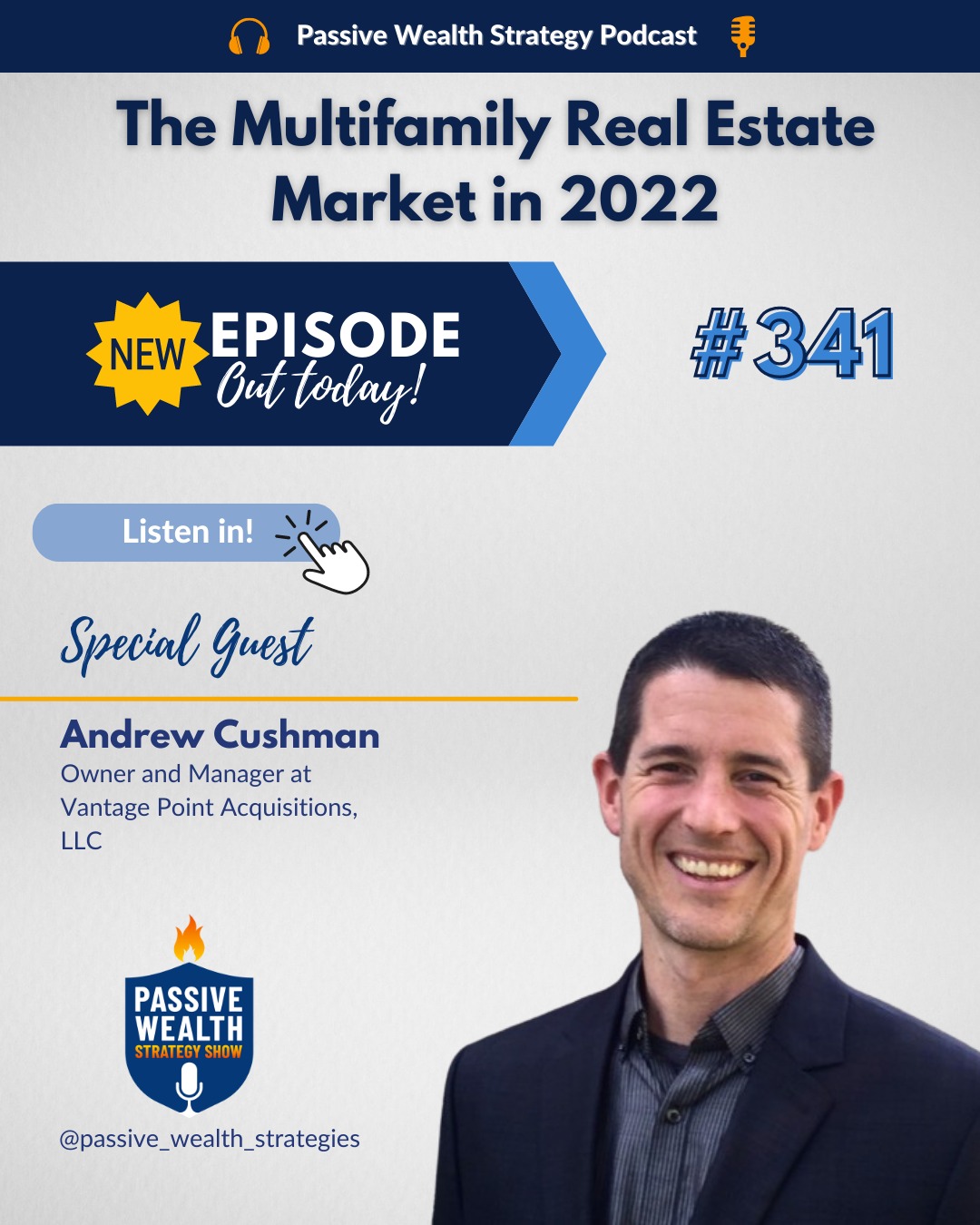
The Multifamily Real Estate Market in 2022 with Andrew Cushman
So nice now to kind of. I don’t know, circle back on the, the equity aspect or the equity topic.
We were talking about return on equity before. You know, I want to bring up financing and, you know, especially considering your experience and where we stand today, what you’re planning to do, or you are doing for your current investments and to make a kind of comment on the return on equity question.
I think one of the reasons people are maybe like, Hesitant to talk about that as well as, because we don’t want to, we don’t wanna make equity sound like a bad thing. We want to have equity properties, right? If there’s a numerator and denominator here, and one of the ways to make that percentage go up is to make that denominator smaller, but that’s not necessarily a good thing.
So, you know, let’s talk about lending and borrowing and how you’re financing your properties now, especially, you know, the fed is talking about. Starting to tighten. We’ll see if they actually do it. You know, I don’t know if they’re going to do it, but whatever interest rates, it’s hard to say if they have any way, anywhere else to go downward.
So what do you think in there and what are you doing?
As far as the type of lending that we do, it’s assets specific. I mean, we certainly liked the idea of locking in a fixed rate for 10 years at this point. I mean, as long as you’re not going to sell the property too soon and incur massive prepayment, you know, yield maintenance or defeasance or prepayment penalties, then I think there’s probably less risk in doing that.
Now the deal we just did, we. I actually did use a bridge loan because it had 20 new construction units. That means two, that, that are, are just getting finished now. So it’s not eligible for agency financing because those 20 units are of course vacant. And so in that case, we did a bridge loan, but.
Captain at 75% LTV you can get bridge loans now for 80%, which that’s just the level we’re not comfortable with and prefer not to go to. So our goal is to go in at 75% LTV, do value, add, and hopefully very quickly get it down to 60 or 65% LTV loan to value. So that means we’ve got 30 to 40% equity in the deal at that point.
You know, Existing portfolio. I think our average loan value is probably 35%. So we’re actually very, very equity heavy at this which we like because you know, the deal, the only way you truly get into trouble with an, a PR pro real estate is if you can’t pay the mortgage and the expenses, right.
So if you’ve got low, low debt, then you know, you can ride through just about anything. So on the acquisition now we look at bridge loans. We look at the agency, we try to stay 7,500. You know, or below. So we’re not for us that feels like appropriate leverage. And then on the bridge loans, we always, we go for, you know, we don’t do, you know, we get, we got alone on the last deal.
They said, okay, well, you know, a one-year bridge loan and it had amazing terms, but. That’s ash you know, that’s a short fuse one year. And what happens if they, you know, the, th, the debt markets are dried up in a year, you can’t, you know, that, that you don’t have any, any leeway. So we weren’t going to hit an opted for a three-year with two one-year extensions.
Right. So really a five-year bridge loan. Gives us five years. You know, if, if worst-case scenario, now we think we’ll be able to refinance out of it much earlier than that with no prepayment penalties. But you know, the the, especially at this point in the cycle, the first question should always, should never be what’s the upside.
The first question should be what’s the downside. How can we mitigate that? And. You can successfully mitigate that then to go to a level at which you’re comfortable, then you can say, okay, cool. Now, what’s the upside. And does, you know, does the ups, does the ratio of the potential upside of the potential downside makes sense, right.
To go ahead and take that risk. So yeah, so that’s how we’re approaching debt. We do, we look at the bridge, we look at agency you know, bridge is kind of the predominant. A loan that you’re going to see in the market right now. And I, you know, I don’t think there’s anything bridge for some people kind of has a bad connotation.
I think that’s a misrepresentation. It’s just that bridge is easier to misuse than agency debt is. I think that’s why some people kind of have a C a negative connotation on Ridge is a good tool to be used. Used properly and unused in the right circumstances. Just don’t just, don’t go for an 80% LTV one-year bridge loan because that that’s a recipe for getting into trouble.
If everything doesn’t go perfectly it very well might not.
So we might have, you know I don’t know, nationwide lockdowns
who knows what’s next. Right?
That was what could happen. Okay. So those are all great points. Yeah. When people are talking about agency data, you mentioned yield maintenance and all those types of things.
They kinda, that kind of tend to be shoved off into a corner. And they don’t really, I think people kind of tend to forget that yield maintenance can actually be like an enormous. Cost, if you have to sell at the wrong time.
Oh yeah. We’ve you know, we, when we, some of our properties that we bought, you know, I don’t know if you remember back in 20 14, 15 and 16, everyone thought rates were just going to go right through the roof.
Right. Which of course we were all dead wrong on that. And so we all, we all did. Ten-year financing thinking. We’re really smart. We’re going to sell in five years on assumption and everyone’s going to want to take over these loans. So five years down the road rates are lower and no one wants those. And the only way they’ll buy the properties is if we pay it off so they can get their own loan.
Well, now all of a sudden we’re getting six and seven-figure, a yield maintenance, prepayment penalties, you know, and it all works out. It just still works out fine because the value of the properties was way higher than anyone thought as well. But you know, it’s not a Kaylee I’ll, you know, just like you said, no one talks about return on equity.
Most, I, you know, I think most is not fully addressed as much as it should be. How important. The right type of debt is to make your investment successful. You know, the bridge has a place agency has a place floating rate has a place fixed, has a place, and it’s not definitely not a one size fits all.
Absolutely.
I think too often, it’s, it’s, it’s tempting to say, okay, we want the long stuff at a low rate because Hey, single families, you buy a single family, get a 30 year mortgage. You’re going to hang onto it for a rental now. Okay. That’s a pretty good deal. You don’t have the same type of, of, of, of risks or downsides that commercial debt does.
And we also have a lot more options in commercial, as far as our DEC.
Yeah. And most, most single family stuff doesn’t have prepayment penalty. Yeah. You can pay that off as many times as you want over and over again. That’s when huge difference when you get into commercial is, you know, they’re packaging that off and selling it on the secondary market and they want absolute guarantee.
They’re going to get the return. And if you sell early, that means you got to pay the difference.
And I know I know some folks that that has bitten and we need to, we need to know or get into, so I love it all great stuff right now. We’re going to take a quick break for our sponsor. All right, Andrew, I’ve got three questions.
I ask every guest on the show, as you know, but you’ve been on the show before you’ve answered those questions already. I got three new ones for our returning guests. Are you ready to?
All right, let’s do it right.
Great. The first one, what is your favorite book to read for personal enjoyment reasons?
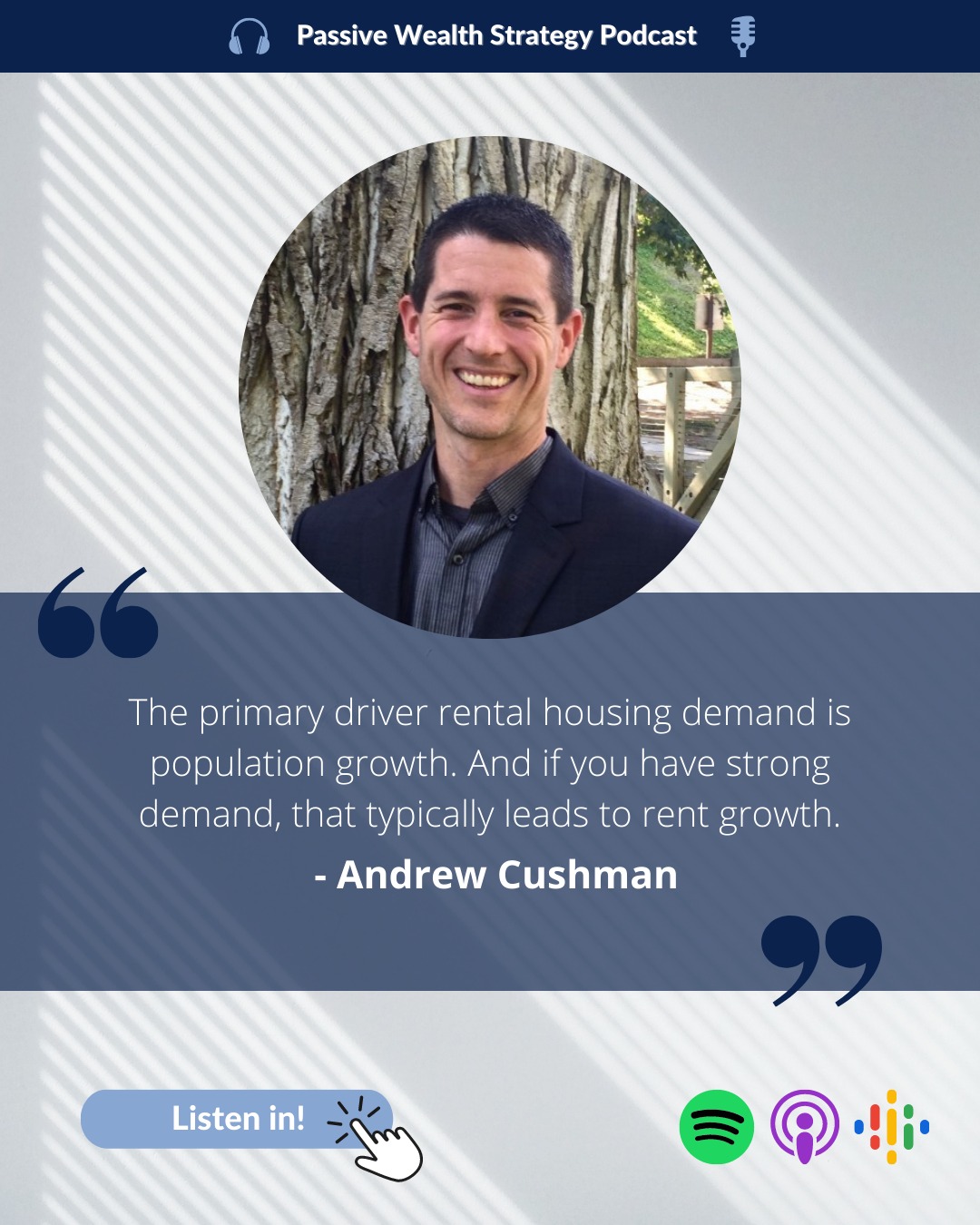
The primary driver rental housing demand is population growth. And if you have strong demand, that typically leads to rent growth.
Andrew Cushman Tweet
Ah, this is probably one that’s not been ever given on your podcast before.
It’s called staying alive and avalanche terrain. I love backcountry ski. And one of the ways to enjoy that is to not get caught in an avalanche. So I enjoy rereading that book every, every fall before the ski season hits. And I’m also a bit of a weather and know science nerd. So I enjoy even just kind of the technical aspects of how snow and avalanches and all that stuff actually works.
So. Nice. Cool. That’s pretty cool. All right. Well, we have your, we had your favorite personal book. What about your favorite business
book? You know it’s an old one that everyone’s heard of and it’s Dale. Carnegie’s how to win friends and influence people because you know, underwriting’s important and you know, all the things that we’ve talked about, finance and all that stuff is important, but at the end of the day, You know, really any, almost any business, but especially real estate.
It it’s a people business. They come, you know, your relationships with residents, your relationships with brokers, your relationships with your lender, your team you know, you, you know, you’re, you’ve heard it before your net worth is equal to your network. And, and it all comes down to that. And so in that book is it’s human.
Nate’s about human nature. So you see, as some of the examples are a little outdated, but human nature has not changed. And so I, I find that book to be useful in all aspects of life, but especially business.
Nice. I love it. That’s a great one. Especially for, at least me. I know you’re an engineer, you have an engineering background.
So do I, and I needed that book so bad and I didn’t even know it until I read it. And it started, you know, things started to click that.
Yeah, that’s probably, yeah. As an engineer, that’s why I need to reread that book occasion on a regular basis because that is not my natural bent.
Hey, we have, these skills can be learned.
The last question here is where are you going to be traveling once the COVID situation is over and we can kind of go back to life as usual.
I am actually next year, this in 2022 taking a boat to Antarctica, to climb some mountains and do some backcountry skiing at the far ends of the earth. So.
That is awesome.
Very cool. Well, Andrew, it’s been great talking with you once again. Thanks for coming back on the show. Give us an update on your business, giving us a breakdown of a successful deal. You had dived into some of the metrics around real estate and loans and so much great stuff. If folks want to reach out, learn more, get in touch, or any of that great stuff, where can they track it?
Yeah, the easiest way is just our website. It’s, you know, vantage point acquisitions. If you Google it, it’ll come up, but it’s just www.vpacq.com. And there’s a couple of contact us tabs on there that comes to, comes to the old inbox and I’d be happy to connect. All right. Great.
Well, Thank you for coming back to the show.
Once again to everybody out there. Thank you for tuning in. If you’re enjoying the show, please leave us a rating and review on the apple podcast. Five stars. If you don’t mind, I appreciate that so much that helps other people learn about the show, because that helps us rank higher in the apple podcast ecosystem.
And I’m always honest with you guys. That gives me a nice little warm and fuzzy feeling because I get to see that you’re engaging with the content. There’s a library right here and you’re escaping the wall street casino along with us. If you know anyone who could use a little bit more passive wealth in their lives, please share the show with them and bring them into the tribe.
I shouldn’t even say as a live read, I’m not reading anything. I’m just saying all this stuff. So thank you for tuning in once again. I hope you have a great rest of your day. Don’t forget to subscribe. Catch us every Monday, Tuesday, and Thursday, I will talk to you about the next one. Bye-bye.

The Multifamily Real Estate Market in 2022
About our Guest

Andrew Cushman
In today’s rate and market environments, it is difficult for investors to get good yields on their investments, especially for those who are too busy to constantly research or those who wish to invest outside of their area of expertise.
Andrew Cushman solves this problem by providing high-yield multifamily investment opportunities to accredited investors. Andrew is a details-driven real estate professional who leaves no stone unturned when vetting deals. His passion drives him forward in entrepreneurial endeavors but his easygoing, friendly spirit is what builds lasting friendships with his investors and business partners. When he’s not looking for and managing deals, you can find Andrew surfing, backcountry skiing, or chasing around his young children. He believes in building passive income streams in order to free up more time for enjoying family and the personal hobbies/passions that make life a little bit more exciting.
Episode Show Notes
In today’s rate and market environments, it is difficult for investors to get good yields on their investments, especially for those who are too busy to constantly research or those who wish to invest outside their area of expertise.
Andrew Cushman solves this problem by providing high-yield multifamily investment opportunities to accredited investors. Andrew is a details-driven real estate professional who leaves no stone unturned when vetting deals. His passion drives him forward in entrepreneurial endeavors but his easygoing, friendly spirit is what builds lasting friendships with his investors and business partners. When he’s not looking for and managing deals, you can find Andrew surfing, backcountry skiing, or chasing around his young children. He believes in building passive income streams in order to free up more time for enjoying family and the personal hobbies/passions that make life a little bit more exciting.
[00:01 – 04:39] Opening Segment
- Get to know Andrew Cushman
- Andrew’s back on the show!
- How Andrew’s past year of real estate investing has been
[04:40 – 12:46] The Multifamily Real Estate Market in 2022
- Control over asset and market selection
- Affordable rents and meeting income
- Get ahead of incoming jobs and populations
- Why you should sell rather than refinance
- Return on Equity and Calculating Projects
[12:47 – 27:50] Equity is Not So Terrifying
- How to Still Benefit from Your Refinanced Property
- Shifting Markets: Secondary and tertiary markets
- Too Much Healthcare and the Medical Market
- Andrew talks about lending, borrowing, and financing
- Bridge loans: What’s the upside? What’s the downside?
[27:51 – 35:47] Closing Segment
- Quick break for our sponsors
- Groundfloor offers short-term, high-yield real estate debt investments to the general public. Check www.passivewealthstrategy.com/groundfloor/ to get started.
- What is your favorite book to read for personal enjoyment reasons?
- Staying Alive in Avalanche Terrain by Bruce Tremper
- Andrew’s favorite business book
- How to Win Friends & Influence People by Dale Carnegie
- Andrew’s Travel Bucket List
- Antarctica
- Connect with my guest. See the links below.
Resources Mentioned:
- Multi-Family Millions by David Lindahl
Tweetable Quotes:
“If you have a strong tailwind behind you, and that just dramatically increases the odds of your success.” – Andrew Cushman
“So what we do like are towns where you’ve got not only a diversified economic base but one that’s recession-resistant,” – Andrew Cushman
“Bridge has a place, agency has a place, floating-rate has a place, fixed has a place, and it’s not definitely a one size fits all arrangement.” – Andrew Cushman
————
Connect with Andrew Cushman through Facebook, Instagram, and LinkedIn. Visit their website https://www.vpacq.com/.
Invest passively in multiple commercial real estate assets such as apartments, self storage, medical facilities, hotels and more through https://www.passivewealthstrategy.com/crowdstreet/
Participate directly in real estate investment loans on a fractional basis. Go to www.passivewealthstrategy.com/groundfloor/ and get ready to invest on your own terms.
Join our Passive Investor Club for access to passive commercial real estate investment opportunities.
LEAVE A REVIEW + help someone who wants to explode their business growth by sharing this episode or click here to listen to our previous episodes





